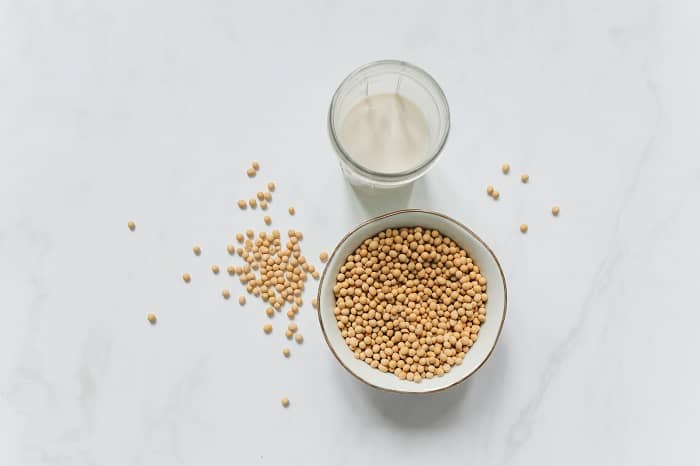
21 Apr Nutrient Deficiencies You Didn’t Know About [Symptoms Explained]
Iron is the most common nutrient deficiency in the world. Though, fill up your plate with 10 more of these nutrients to avoid malnutrition.
In fact, according to a medical research…
Nearly, 10% of Americans face at least one of the 10 most common deficiencies.
However, apart from iron, there are several other nutrient deficiencies that are surprisingly common among masses, globally.
This could be because of a staple American plate that’s lacking in terms of vitamins and minerals.
Subsequently, it opens the doors for nutrition deficiencies.
Now, you might be wondering what deficiencies get counted as the 11 most common nutrient deficiencies?
Yes?
Well, then it’s time you shrug off your worries as we’ve got it all covered up for you.
Go through this blog curated exclusively to list out the 11 most common nutrient deficiencies worldwide.
The 11 Most Common Nutrient Deficiencies
Nutritional deficiencies can trigger some chronic health distresses.
So, it’s important to get acquainted with the deficiencies before combating them.
Here are the 11 common nutritional deficiencies faced worldwide.
#1. Iron Deficiency
A Conventional carrier of freshly oxygenated RBCs, iron is one of the most common nutrient deficiencies globally.
In fact, it ranks no. 1 on this list, and for obvious reasons.

It’s unfortunate that despite being so vital, its requirement is being ignored by the masses.
Moreover, women are more prone to iron deficiency than men.
For instance, as per a medical institute’s report, about 20% percent of women develop anemia during their childbearing age.
Apart from women, children and vegetarians are also vulnerable to this current issue in nutrition of iron.
So, how do we know that we have low iron levels in our bodies?
#2. Iodine Deficiency
It’s one of the most common nutritional deficiencies in the world.
You might have seen people with abnormally swollen areas in the neck region in the documentaries.
This is caused due to enlarged thyroid gland, developed due to iodine deficiency.

More common in women, it can severely affect them in the long run.
However, not to worry as goiter only develops in the cases of acute iodine deficiency.
Iodine is the powerhouse of the production and release of the thyroid hormone.
Subsequently, this hormone keeps in check the calories, brain functioning, heartbeat, body temperature, etc.
In short, iodine is one of the vital nutrients to keep the thyroid in check.
Thus, balancing its nutritional content becomes even more important.
Iron deficiency symptoms range from mild to severe.
#3. Vitamin D Deficiency
This fat-soluble vitamin is, most importantly, responsible for keeping your bones healthy.
However, despite this, it falls in the category of the most common deficiencies in the world.
According to data, about 42% of the population in the US has the expectancy of VitaminD deficiency.

So, who all are more vulnerable to this cellular nutritional deficiency?
You’re more likely to get Vitamin D deficiency if you are:
- Of Older age,
- dark-skinned,
- Suffering from kidney or liver disease.
Apart from this, breastfeed infants also fall in the risk zone of getting this most common vitamin deficiency, after iron.
So, how to identify it?
#4. Calcium Deficiency
Primarily, calcium acts as a gatekeeper for healthy bones and teeth.
Secretly, it acts as a signaling molecule that contributes to the functioning of the heart, nerves, and muscles.

Let us see why and how calcium deficiency affects our bones.
The bones deposit any extra calcium.
When facing its deficiency, our body automatically commands our bones to shed the stored calcium.
This is why bones are more affected by calcium deficiency.
For instance, symptoms like fragile or tender bones are common.
Apart from these two, there are many other symptoms too.
#5. Vitamin C Deficiency
Primarily responsible for repairing broken tissues, Vitamin C is one of the nutrients full of flavonoids and antioxidants.
Additionally, it’s an asset for healthy bones and teeth and plays a pivotal role in collagen formation.
Unfortunately, it’s also indexed as one of the most common nutrient deficiencies worldwide.

As a result, the deficiency, if left untreated, can develop into ailments like skin problems, gum disease, and can even affect our immune system.
At worst, it can cause scurvy.
Now, talking about the vulnerabilities, it mainly affects people with underlying kidney disease, poor diet, and even smokers.
So, is there any symptom to recognize the same?
#6. Magnesium Deficiency
Magnesium acts as an encouraging factor for the conversion of foods into energy.
Hence, it’s an IMPORTANT mineral.

In scientific words, it is also an enzyme that regulates our blood pressure level, thereby keeping pulse rate normal.
Surprisingly, magnesium intake is negligible in half of the US population (approximately).
As a result, its deficiency is not so surprising.
Also, those who are diabetic, alcohol addicts, pregnant women, and old people are at a higher risk of developing this deficiency.
Now, the causes of nutritional problems like this are many and will be better understood after diagnosis.
However, its deficiency can be identified with relative ease.
#7. Vitamin A
This particular nutrient is one of the most common nutrient deficiencies in third-world countries.
Vitamin A belongs to a group of fat-soluble retinoids which are excellent for eye vision, cell growth, and overall boosting metabolism.
However, its deficiency may cause eye blindness and can adversely affect our immune system.
Moreover, children are the most vulnerable to get caught with this deficiency.

Fun fact!
Southeast Asia is the most affected region with Vitamin A deficiency.
So, what are its symptoms?
#8. Vitamin E Deficiency
Also known as the beauty vitamin, Vitamin E is infused with antioxidants that protect cells from free radicals.
Not only this, but it also prevents blood clotting, meanwhile improving immunity.
Despite being an important body vitamin, it is one of the most common nutritional deficiencies worldwide.

Most common in children, this deficiency is also likely to develop among those whose diets contain more polyunsaturated fatty acids.
#9. Copper Deficiency
People with celiac disease are at the highest risk of developing a copper deficiency.
This could be one reason why copper gets included in the list of most common nutrient deficiencies, globally.

Often, people confuse copper deficiency with anemia because of similar symptoms.
This mineral along with iron serves the production of healthy RBCs.
Apart from this, it can also aid in preventing cardiac diseases and improving body metabolism.
Now, copper deficiency symptoms share many similarities with other nutritional deficiencies.
#10. Vitamin B12
Scientifically known as cobalamin, it is a water-soluble vitamin, known essentially in aiding blood formation along with brain-nerve functioning.

However, that does not stop it from being one of the most common nutrient deficiencies worldwide.
According to some researches, about 80 to 90% of vegetarians unknowingly have Vitamin B12 deficiency.
Now, moving on to its symptoms…
#11. Potassium Deficiency
Best known for balancing fluids, heart rate, and blood pressure, Potassium is one of the essential nutrients with people having deficiency at the same time. That too at a larger scale.
However, it isn’t the most common mineral deficiency.

This deficiency is usually triggered by excessive medications and alcohol intake.
Other triggers include low folate levels and underlying kidney disease.
Subsequently, it becomes important to identify the symptoms before it gets worse.
Now, you might be thinking why not go easy and instead buy health supplements to cure these deficiencies?
Well, it’s not such a terrible idea but one that’s not always needed unless advised by your doctor.
Plus, with natural sources, the results will be gradual but will be for the long term.
Moreover, unlike supplements, natural food sources will keep you free from any potential threats of side effects.
Therefore, it’s always a better idea to fuel up even the most common micronutrient deficiency with natural food sources.
Now, how fast can we expect a nutritional deficiency recovery from natural diet sources?
How Long Does It Take To Correct Nutritional Deficiencies?
Typically, it takes anywhere between 2-4 weeks to correct any nutritional deficiency.
However, there are a few factors to consider as far as the recovery of a nutritional deficiency is concerned.
#1. The Intensity of Deficiency
If the deficiency is in its initial or moderate phase, it can be treated with relative ease by medications.
However, if left untreated, recovery may demand surgical procedures.
#2. Age
Younger people have a better immune and metabolism system.
Hence, they recover fast. On the contrary, this process is slow in children and old age people.
#3. Metabolism Speed
People with a higher metabolism rate can absorb nutrients faster, thereby recovering faster from a deficiency.
However, it is quite opposite for people with low metabolic rates.
Now, how can nutrient deficiency be prevented?
Well, most common nutrient deficiencies can be prevented by taking avid measures.
Below, we have discussed some of the preventive measures for common nutritional problems shared by top-notch medical institutes.
How to Prevent Nutrient Deficiency?
Prevention is better than cure wasn’t coined merely to get printed in moral science textbooks.
Rather, the motive of this phrase was to protect mankind from future potential threats.
Similarly, this should be applied in the case of nutrient deficiency diseases.
Thus, here are a few ways through which you can proactively prevent one of the most common nutrient deficiencies.
#1. Nutritional Diagnosis
Nutritional diagnosis or Nutritional assessment are both interchangeable terms used to describe the measurement of a nutrition Intake in our body.
This includes Clinical and behavioral factors.
With the help of this, one can stay updated with their nutritional levels, and, henceforth, escape chances of any deficiency.
#2. Be Extra Careful In the Case of Vulnerabilities
People who are more likely to develop certain deficiencies should remain extra careful of their diet.
#3. Follow a Balanced Diet Chart
Get a prescribed diet chart from your dietician after getting the results of your nutritional assessment.
Inculcating these habits will not only prevent you from getting nutritional deficiencies but ultimately will give you a clean bill on health.
So, this was all about acquainting you with the most common nutrient deficiencies in the world.
Though, to put it bluntly, the most common nutrient deficiency in the world is still considered iron.
Final Comments
People often have complaints like, “How can I have this nutritional deficiency even though I include enough of it in my diet?”
So, the answer is that you simply need more of it than your current intake.
Medical science simplifies this by acknowledging the abundance of nutrition from natural diet sources.
Therefore, all you need to do is to fill up your kitchen cabinets with the above-mentioned natural food sources to thrive at the top of every nutritional chart.



No Comments